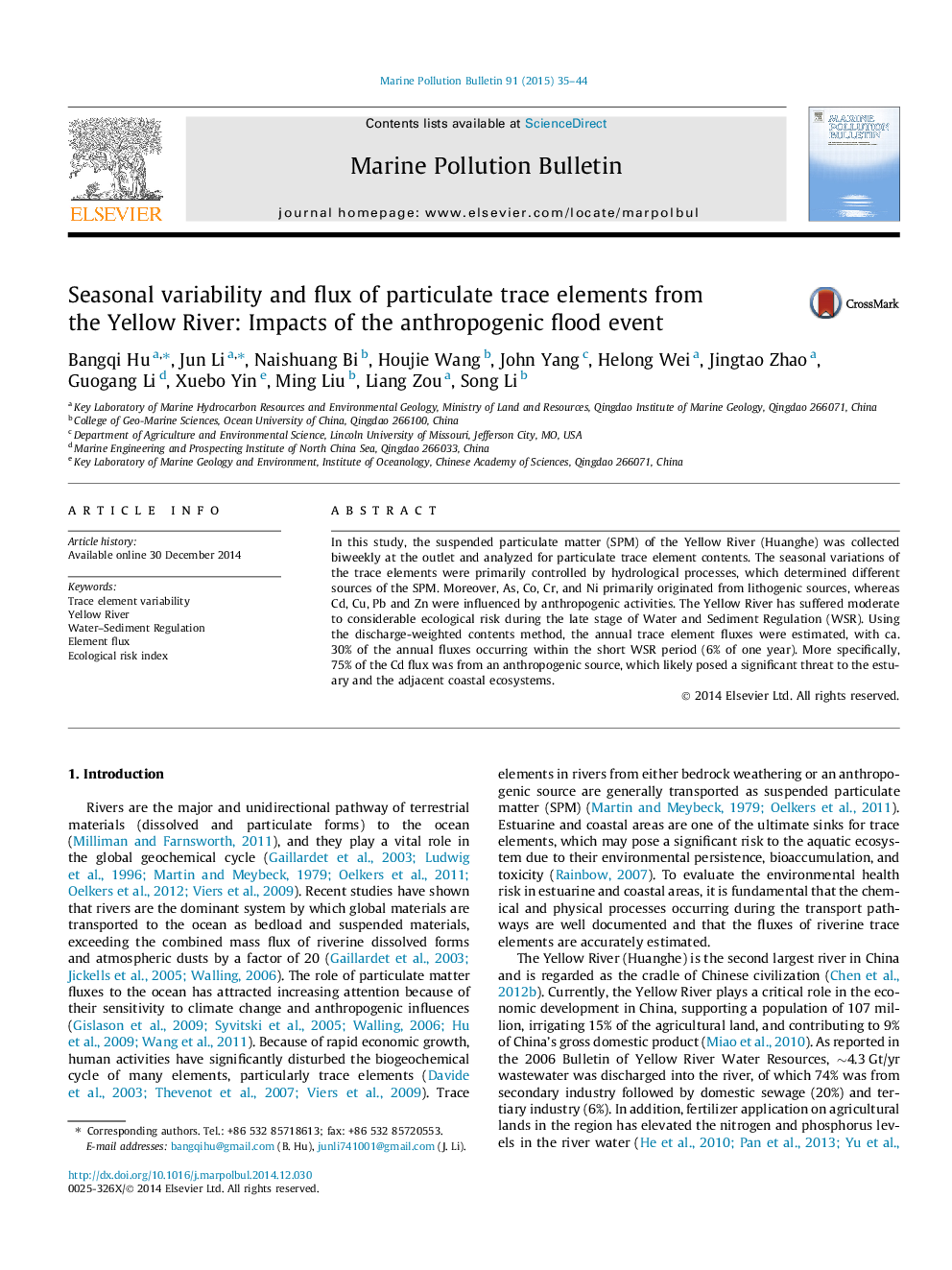| Article ID | Journal | Published Year | Pages | File Type |
|---|---|---|---|---|
| 6357504 | Marine Pollution Bulletin | 2015 | 10 Pages |
Abstract
In this study, the suspended particulate matter (SPM) of the Yellow River (Huanghe) was collected biweekly at the outlet and analyzed for particulate trace element contents. The seasonal variations of the trace elements were primarily controlled by hydrological processes, which determined different sources of the SPM. Moreover, As, Co, Cr, and Ni primarily originated from lithogenic sources, whereas Cd, Cu, Pb and Zn were influenced by anthropogenic activities. The Yellow River has suffered moderate to considerable ecological risk during the late stage of Water and Sediment Regulation (WSR). Using the discharge-weighted contents method, the annual trace element fluxes were estimated, with ca. 30% of the annual fluxes occurring within the short WSR period (6% of one year). More specifically, 75% of the Cd flux was from an anthropogenic source, which likely posed a significant threat to the estuary and the adjacent coastal ecosystems.
Related Topics
Physical Sciences and Engineering
Earth and Planetary Sciences
Oceanography
Authors
Bangqi Hu, Jun Li, Naishuang Bi, Houjie Wang, John Yang, Helong Wei, Jingtao Zhao, Guogang Li, Xuebo Yin, Ming Liu, Liang Zou, Song Li,
